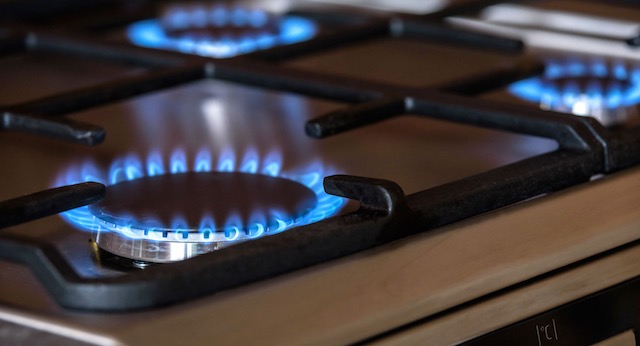Opinion: Local & Green – Moving From Gas To Induction Cooktops Improves Indoor Air Quality

Photo: rawpixel.com. Public domain
Library Loan Program Launched at Jones, Forbes and Lilly Libraries

Thank the Lord we in Massachusetts don’t suffer most of the culture wars that rage elsewhere in this crazy country. Recently, along the lines of “They’re taking our hamburgers away!”, conservatives raised the specter that, “They’re taking our gas stoves away!”
What started this nonsense? It started when, in December, a member of the Consumer Product Safety Commission suggested a ban on new gas stoves was possible because they have been linked to childhood asthma. No federal ban has been proposed. However, many cities and counties, including Massachusetts, are now looking at legislation or policies to limit the use of natural gas in new buildings.
.We are fortunate that since March of 2015, Amherst has been part of the Berkshire Gas moratorium on any new natural gas hookups, so at least new homes and buildings are not using natural gas.
Library Loan Program Launched
To get things moving in advance of any official restrictions, advocates around the US are educating the public about induction stoves that work with electromagnetism. In doing so, they are working to soften public resistance to the transition. People don’t love their gas dryers or gas water heaters. They do, however, love their gas stoves.
Here, in the Valley, and starting on February 8, library card holders at the Jones, Forbes, or Lilly Libraries will be able to give an induction stove a try and judge whether to then purchase one of their own. Library users can borrow an induction cooking kit, complete with portable countertop induction burner, and pans, at no charge. Funded by Local Energy Advocates of Western MA (LEA), and coordinated by Mothers Out Front, Northampton and Amherst Chapters, the induction cook kits library loan program aims to reduce greenhouse gas emissions and indoor air pollution caused by the use of gas stoves. The cook kits were purchased from the Center for EcoTechnology, which also provides technical resources.
So Why Switch From A Gas To An Induction Stove?
First and foremost, induction stoves are better for the climate. Using an induction stove instead of gas cuts your climate change-causing carbon and methane emissions dramatically. It is notable that three quarters of methane leaks from gas stoves happen when stoves are turned off.
Second, induction stoves are safer and better for your family’s health. Induction stoves eliminate harmful indoor emissions that come from gas, and that increase the risk of childhood asthma by 45%. In a January 2023 study, WEACT for Environmental Justice found significant improvements in indoor air quality when transitioning from gas to induction stoves in affordable housing. Households with induction stoves experienced a 35 percent reduction in daily nitrogen dioxide (NO2) concentrations compared to those using gas stoves, as well as a significant reduction of carbon monoxide concentrations.
Apparently, we’ve known about this for years. A 1973 Environmental Protection Agency study provided evidence that gas stove exposure posed respiratory risks. And In 1985, the Consumer Product Safety Commission raised the concern again and asked the EPA to look into it.
Third, switching from gas to cooking with an induction stove will save you money. Induction burners are more efficient than conventional electric stoves and about three times more efficient than gas, according to federal data, and heat up much faster. Additionally, there are federal and state incentives available under the new Inflation Reduction Act and MassSave.
Even with the incentives, switching is still prohibitive for some families. Fortunately, costs are coming down as demand increases.
The gas stove is beloved by many and is seen as a barrier to building electrification. But, people are learning to love induction stoves because they heat faster, are responsive, and easy to clean. Luckily, induction stoves are growing in popularity among chefs. For restaurants and residents that have chosen to use propane, it is notable that propane produces CO2 emissions comparable to those from natural gas and is more expensive than natural gas.
How Does An Induction Cook Stove Work?
An induction stovetop works through heating cookware directly using electromagnetic induction. The magnetic field isn’t hot on its own, but when a piece of metal cookware enters this magnetic field, the molecules within the metal become agitated, generating heat within the cookware itself. Induction cooking wastes less energy, requires no open heating elements, and offers you precise control over the temperature of each pan.
Local Energy Advocates (LEA) intends to raise more funds for local projects such as this one from local residents, in order to accomplish its goals which are to generate ideas and facilitate the implementation of plans to reduce greenhouse gas (“GHG”) emissions from the electricity, transportation, public infrastructure, and building sectors in Western Massachusetts; and to increase the resiliency of our local energy systems. LEA works to benefit low income residents in our communities and places a high priority on projects that promote environmental justice.
See A Demonstration
For residents interested in seeing an induction cooktop demonstration, there will be one at the Amherst Climate Justice Alliance Kick Off Event on February 11 at 11:30 a.m. in the Jones Library Woodbury Room.
Darcy DuMont is a founding member of Zero Waste Amherst, Local Energy Advocates of Western MA and the Amherst Climate Justice Alliance. As a Town Councilor, she sponsored the legislation creating the Amherst Energy and Climate Action Committee.
